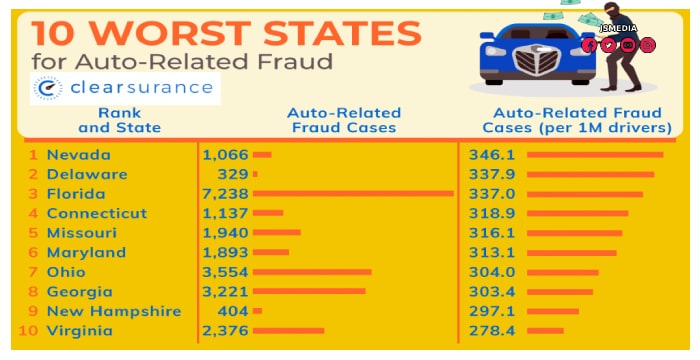JSMedia – A new study has exposed the most common car insurance fraud types. These fraudulent practices are a common way for dishonest drivers to reduce their premiums. These techniques include registering a vehicle in a lower-cost state, lowering the stated mileage, and making false claims. According to the study, premium rating errors cost auto insurers $15.9 billion in 2009, accounting for 10 percent of all personal auto insurance premiums. More insurers are using automated systems to detect fraudulent claims. Anti-fraud efforts are targeting these kinds of fraud.
In addition to falsely claiming to have been the victim of an accident, insurers can also use false information to obtain payment. For example, when a driver falsely alleges the other party was at fault, he or she may submit fake police reports, hospital bills, or car repair bills as proof of the accident. In addition, he or she may provide photographs of the damage to their vehicles.
While insurers cannot control the financial motives of fraudsters, they can take steps to improve their image and prevent future fraud. Good customer service and rewarding good behavior may deter the financially motivated claims.
Car Insurance Fraud Types Revealed in New Study

In addition, insurers rely on the services of defence counsel when litigation begins. They can gather information to confirm suspicions or proceed if evidence is discovered. A reward may be offered if the victim reveals their identity to police.
The most common types of car insurance fraud include the intentional omission of a driver, inflated claims, and unauthorized drivers. For example, a person might not be listed on a policy when they have never had an accident. They may be a victim of fraudulently claiming to be a victim of an accident. They may also not have been involved in an accident at all. If the driver had been involved in an accident, they could have received a large payout.
In addition to these schemes, the study also reveals that more Americans are opting to purchase insurance that doesn’t actually cover the vehicle. For instance, 40% of the population lied about their annual mileage. Another 27% of respondents lied about their ZIP code. However, a third percent of respondents said they were willing to lie when it came to the actual mileage. While these fraudulent actions are still small, it is important to note that they are affecting millions of families in the U.S.
There are three main types of auto insurance fraud: application fraud, premium leakage, and staged accidents. This kind of fraud involves falsifying information on an application form or premiums. Other common types of insurance scams include bogus mileage claims and false or overblown reports. These cases are categorized as “application fraud” and are not always the same as other types of auto insurance. These practices are also classified as ‘application’.

